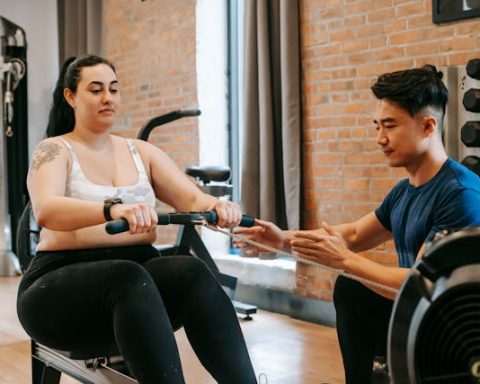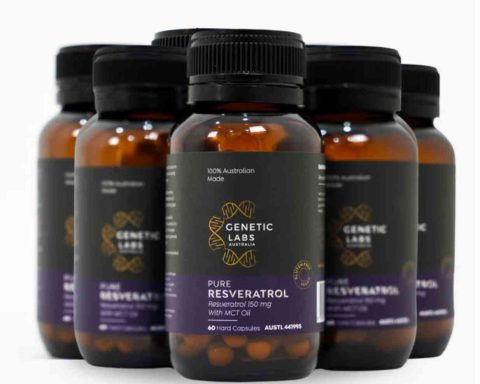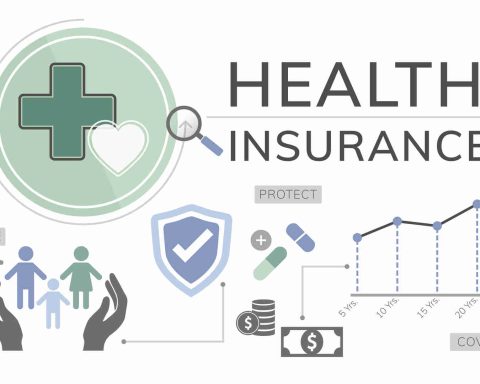In the modern era, where sedentary lifestyles have become the norm, the quest for optimal health often centers on integrating consistent physical activity into daily routines. This integration is not merely about enhancing physical fitness or weight management, its significance extends deeply into the complex interplay of bodily hormones, which orchestrate a myriad of physiological functions.
Through rigorous scientific inquiry and anecdotal evidence, the article reveals how hormones respond and adapt to various forms of exercise, highlighting both the immediate and long-term effects on individual well-being.
As society grapples with increasing health issues like obesity, diabetes, and stress-related ailments, understanding the hormonal responses to exercise can offer powerful insights into managing and potentially overcoming these challenges.
This article aims to bridge the gap between common perceptions of exercise as merely a tool for physical fitness and its profound implications for hormonal health, providing a holistic view of how physical activity can be a cornerstone of not just physical, but also mental and emotional well-being.
What Hormones Are Released When Exercising?
Human Growth Hormone (HGH)
Human Growth Hormone (HGH) is a powerhouse in terms of its roles and benefits. It is crucial for cell growth, reproduction, and regeneration, helping to maintain, build, and repair healthy tissue throughout the body, including the brain and other vital organs.
The benefits of increased HGH from exercise are not limited to just physical attributes. HGH also promotes better skin health and appearance, contributing to a more youthful look. Moreover, it plays a significant role in the body’s healing process, speeding up recovery from injuries and strenuous workouts. Thus, regular physical activity can be seen as a natural stimulus for keeping our bodies well-regulated and rejuvenated.
However, it’s important to note that for individuals with a clinical deficiency in HGH, exercise alone may not be sufficient to bring HGH levels to a normal range. In such cases, HGH therapy, under the supervision of a healthcare provider, may be necessary. This therapy can help address the deficiency, allowing the individual to enjoy the full benefits of healthy HGH levels, including improved muscle strength, better metabolism, and enhanced quality of life.
Testosterone
Testosterone is another critical hormone that is favorably affected by exercise. Known for its significant impact on muscle growth and strength, testosterone levels rise after engaging in strength training and high-intensity workouts. This hormone not only helps in increasing muscle mass and improving overall strength but also aids in fat loss and boosts energy levels.
Bodybuilders and fitness enthusiasts seek to maximize muscle growth and fat loss by comparing the effects of HGH vs testosterone. While testosterone shares many commonalities with HGH, they also have distinct roles. Testosterone particularly enhances libido and contributes to bone density and red blood cell production, which are less directly influenced by HGH.
The increase in testosterone through regular exercise can lead to improved mood, higher libido, and better cognitive function. It also plays a crucial role in bone density and red blood cell production, making it a vital hormone for long-term health.
However, it’s important to note that in cases of critically low testosterone, exercise alone may not be sufficient, and therapy may be required, similar to low growth hormone levels.
Endorphins
Often celebrated as the body’s natural painkillers, endorphins are released during exercise and are known for their ability to produce a feeling of well-being and euphoria. This hormone helps alleviate pain and decrease stress, making exercise an essential activity for mental health as well as physical health.
Cortisol
Cortisol, the stress hormone, has a complex relationship with exercise. While acute increases during exercise help mobilize energy and manage stress effectively, maintaining this balance is crucial. Regular moderate exercise can help regulate cortisol levels, enhancing the body’s resilience to stress over time.
Insulin and Insulin-Like Growth Factors
Exercise also positively impacts insulin and its related growth factors. Enhancing insulin sensitivity through physical activity is key to managing blood glucose levels effectively, which can prevent lifestyle-related diseases such as type 2 diabetes. Moreover, increased levels of insulin-like growth factors alongside exercise contribute to cellular growth and muscle repair.
Adrenaline and Noradrenaline
These hormones, which increase in response to exercise, help prepare the body for vigorous activity. They improve the heart rate, increase blood flow to muscles, and enhance the body’s ability to metabolize sugars and fats, boosting overall endurance and performance.
Can Exercise Correct Hormonal Imbalance?
Hormonal imbalances can significantly impact our well-being, influencing everything from mood to metabolism. Abnormal enlargement of breast tissue in the male chest is a common factor these days where gynecomastia surgery is a prominent solution. However, that is not all!. Exercise is a powerful method for managing these imbalances by directly affecting hormone production and regulation.
To boost HGH, which supports muscle growth and fat metabolism, high-intensity interval training (HIIT) and heavy resistance training are highly effective. Exercises like sprinting, circuit training, and heavy lifting in short bursts can lead to significant increases in HGH production. Similarly, strength training that involves large muscle groups through compound movements like squats, deadlifts, and bench presses can enhance testosterone levels. Keeping workouts intense and incorporating heavy weights with adequate rest periods maximizes testosterone production.
Aerobic activities such as running, cycling, or swimming are excellent for increasing endorphins. Engaging in these activities for at least 30 minutes can trigger a release of these natural mood lifters, providing not only a surge in happiness but also pain relief.
To manage and reduce cortisol levels, which can rise during stress, moderate-intensity aerobic exercises are beneficial. Regular practices such as brisk walking, jogging, or swimming can help keep cortisol in check, while relaxation-focused activities like yoga can also regulate cortisol production.
For regulating adrenaline and noradrenaline, which help the body respond to stress, short bursts of high-intensity exercises like sprinting or high-intensity interval training (HIIT) are particularly effective. These activities enhance the body’s ability to handle stressful situations by modulating the release of these hormones.
Exercise offers a dynamic and natural solution for correcting hormonal imbalances, harnessing the body’s inherent mechanisms to maintain equilibrium. By selecting specific types of exercises targeted at boosting or regulating certain hormones, individuals can significantly improve their hormonal health. Integrating a variety of exercises tailored to personal health goals and conditions can be a sustainable approach to achieving and maintaining hormonal balance and overall health.
Conclusion
The close relationship between hormonal balance and physical activity is vividly illustrated throughout this article, highlighting exercise as an essential element for maintaining and improving overall health.
Each type of exercise contributes uniquely to hormonal health, from the muscle-building effects of HGH and testosterone to the mood-boosting properties of endorphins and the stress-regulating benefits of cortisol.
Regular physical activity effectively counteracts the negative impacts of a sedentary lifestyle, addressing common health issues such as obesity, diabetes, and stress-related ailments. Furthermore, the adjustments in hormone levels that exercise promotes are critical for long-term health, aiding in glucose management, improving metabolic function, and stabilizing emotional health.






